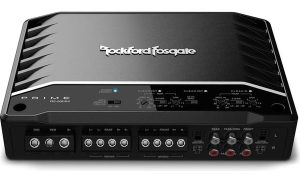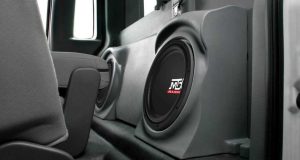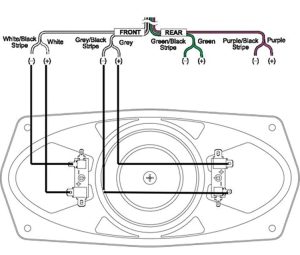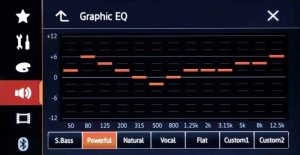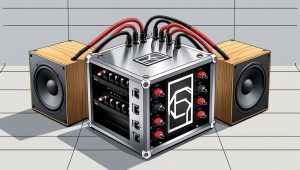Building a custom subwoofer box transforms your car audio system, delivering deep, powerful bass that elevates every song. A well-crafted enclosure ensures your subwoofer performs at its best, providing clean, distortion-free sound. This guide walks you through the process of designing and constructing a subwoofer box tailored to your needs. Whether you’re a car audio enthusiast or a DIY beginner, you’ll find clear, actionable steps to create a high-quality enclosure. Let’s dive in and craft a subwoofer box that shakes the ground.
Contents
- Why Build Your Own Subwoofer Box?
- Step 1: Determine Your Subwoofer’s Specifications
- Step 2: Design the Subwoofer Box
- Step 3: Cut the MDF Panels
- Step 4: Assemble the Box
- Step 5: Seal and Reinforce the Enclosure
- Step 6: Install the Subwoofer and Wiring
- Step 7: Install the Box in Your Vehicle
- Tips for Success
- Common Mistakes to Avoid
- Conclusion
Why Build Your Own Subwoofer Box?
Creating your own subwoofer enclosure offers multiple benefits. First, you customize the box to fit your vehicle’s space, ensuring a seamless installation. Second, you control the materials and design, optimizing sound quality for your specific subwoofer. Third, building your own box saves money compared to buying a pre-made one. Plus, the satisfaction of completing a hands-on project adds a personal touch to your audio setup. With the right tools and guidance, you’ll produce a box that rivals professional builds.
Before starting, gather essential tools and materials. You’ll need a tape measure, pencil, jigsaw, drill, screwdriver, wood glue, screws, and sandpaper. For materials, choose medium-density fiberboard (MDF) for its durability and acoustic properties. You’ll also need silicone sealant, terminal cups, and speaker wire. Having everything ready streamlines the process, letting you focus on crafting a sturdy, sound-enhancing enclosure.
Step 1: Determine Your Subwoofer’s Specifications
Every subwoofer has unique requirements, so check the manufacturer’s manual for details. Look for the recommended enclosure type—sealed, ported, or bandpass—and the ideal internal volume, measured in cubic feet. Sealed boxes deliver tight, accurate bass, while ported boxes produce louder, booming sound. Bandpass enclosures focus on specific frequencies for intense output. Your choice depends on the music you enjoy and the sound profile you want.
Next, note the subwoofer’s mounting depth, diameter, and cutout size. These measurements ensure the speaker fits perfectly in the box. For example, a 12-inch subwoofer typically requires a cutout of about 11 inches. Double-check these specs to avoid errors during construction. If you’re unsure, contact the manufacturer or check online forums for advice from audio enthusiasts.
Step 2: Design the Subwoofer Box
Now, design the enclosure based on your subwoofer’s specs. Use the internal volume from the manual to calculate the box’s dimensions. Online subwoofer box calculators simplify this step, letting you input the volume and enclosure type to get precise measurements. Aim for a compact design that fits your vehicle’s trunk or cargo area without sacrificing sound quality.
Consider the box’s shape. Rectangular boxes are easier to build and fit most spaces, but you can create angled or custom shapes for tight areas. Sketch the design on paper, including the front, back, sides, top, and bottom panels. Add a port if building a ported box, ensuring the port length and diameter match the manufacturer’s recommendations. For sealed boxes, focus on airtight construction to prevent air leaks that degrade sound.
When designing, account for the MDF’s thickness, typically ¾ inch. Subtract this from your internal volume calculations to maintain accuracy. For example, a box with 1.5 cubic feet of internal volume requires slightly larger external dimensions to accommodate the wood. Label each panel clearly on your sketch to stay organized during cutting.
Step 3: Cut the MDF Panels
With your design ready, transfer the measurements to the MDF sheet. Use a tape measure and pencil to mark each panel precisely. Double-check your markings to avoid mistakes, as MDF is costly to replace. A straightedge or T-square ensures clean, accurate lines.
Set up a jigsaw with a fine-tooth blade for smooth cuts. Clamp the MDF to a workbench to keep it steady. Cut each panel slowly, following your marked lines. For the subwoofer’s mounting hole, measure the cutout diameter and mark it on the front panel. Use a compass to draw a perfect circle, then cut it out with the jigsaw. Sand the edges of each panel to remove splinters and ensure a tight fit during assembly.
Safety comes first. Wear goggles and a dust mask to protect yourself from sawdust. Work in a well-ventilated area, as MDF dust can irritate your lungs. If you’re new to cutting wood, practice on scrap pieces to build confidence before tackling the main panels.
Step 4: Assemble the Box
Now, assemble the panels to form the subwoofer box. Start with the bottom panel and one side panel. Apply wood glue along the edge where they meet, then press them together. Drill pilot holes to prevent the MDF from splitting, and secure the panels with 1.5-inch wood screws. Repeat this process for the remaining sides, top, and back panels, ensuring each joint is flush.
For ported boxes, install the port tube before closing the box. Cut a hole in the front or side panel to match the port’s diameter, then glue and screw the tube in place. Ensure the port is secure to avoid vibrations that cause rattling. If you’re building a sealed box, focus on creating airtight joints, as even small gaps weaken bass response.
Before attaching the front panel, test-fit the subwoofer in the cutout to confirm it sits flush. Once satisfied, glue and screw the front panel in place. Wipe away excess glue with a damp cloth to keep the box clean. Let the glue dry for at least an hour before moving to the next step.
Step 5: Seal and Reinforce the Enclosure
A strong, airtight box maximizes sound quality. Apply silicone sealant to all interior joints to prevent air leaks. Use a caulking gun for precise application, and smooth the sealant with your finger for a clean finish. Let the sealant cure for 24 hours to ensure a solid bond.
Add internal bracing to reinforce the box and reduce vibrations. Cut small MDF strips and glue them inside the box at stress points, such as the corners or near the subwoofer. Bracing strengthens the enclosure, ensuring it withstands the subwoofer’s powerful movements without flexing.
For extra durability, sand the exterior and apply a coat of primer and paint. Choose a color that matches your vehicle’s interior for a polished look. Alternatively, cover the box with automotive carpet using spray adhesive for a professional finish. This step enhances aesthetics and protects the wood from moisture.
Step 6: Install the Subwoofer and Wiring
With the box complete, install the terminal cup on the back or side panel. Cut a hole to fit the cup, then secure it with screws and seal the edges with silicone. The terminal cup connects the subwoofer to your amplifier, so ensure it’s easily accessible.
Run speaker wire from the terminal cup to the subwoofer’s mounting location inside the box. Connect the wire to the subwoofer’s terminals, ensuring correct polarity (positive to positive, negative to negative). Place the subwoofer in the cutout and secure it with screws, being careful not to overtighten and strip the MDF.
Test the wiring by connecting the box to your amplifier and playing music at low volume. Listen for clear, distortion-free bass. If you hear rattling or weak output, check for loose screws or air leaks and fix them promptly.
Step 7: Install the Box in Your Vehicle
Place the subwoofer box in your vehicle’s trunk or cargo area. Secure it with brackets or straps to prevent movement while driving. If space is tight, angle the box or build a custom enclosure to fit snugly. Ensure the subwoofer faces the desired direction—toward the rear for deeper bass or forward for balanced sound.
Connect the terminal cup to your amplifier using high-quality speaker wire. Double-check all connections to avoid short circuits. Once installed, play music and adjust your amplifier’s settings, such as gain and crossover frequency, to optimize the subwoofer’s performance.
Tips for Success
- Measure twice, cut once. Accurate measurements prevent costly mistakes.
- Choose quality materials. High-grade MDF and screws improve durability and sound.
- Test before finalizing. Check the subwoofer’s fit and sound before sealing the box.
- Consult online resources. Forums and videos offer valuable tips from experienced builders.
- Take your time. Rushing leads to errors, so work methodically.
Common Mistakes to Avoid
Don’t skip sealing the box, as air leaks ruin bass quality. Avoid using low-quality MDF, as it warps over time. Never ignore the subwoofer’s specs, as an improperly sized box reduces performance. Finally, don’t overtighten screws, as this damages the wood and weakens the structure.
Conclusion
Building a subwoofer box is a rewarding project that boosts your car audio experience. By following these steps, you create a custom enclosure that delivers powerful, clear bass tailored to your preferences. From designing the box to installing the subwoofer, each step brings you closer to a professional-grade audio setup. Grab your tools, pick a weekend, and start building. Your dream sound system awaits.

